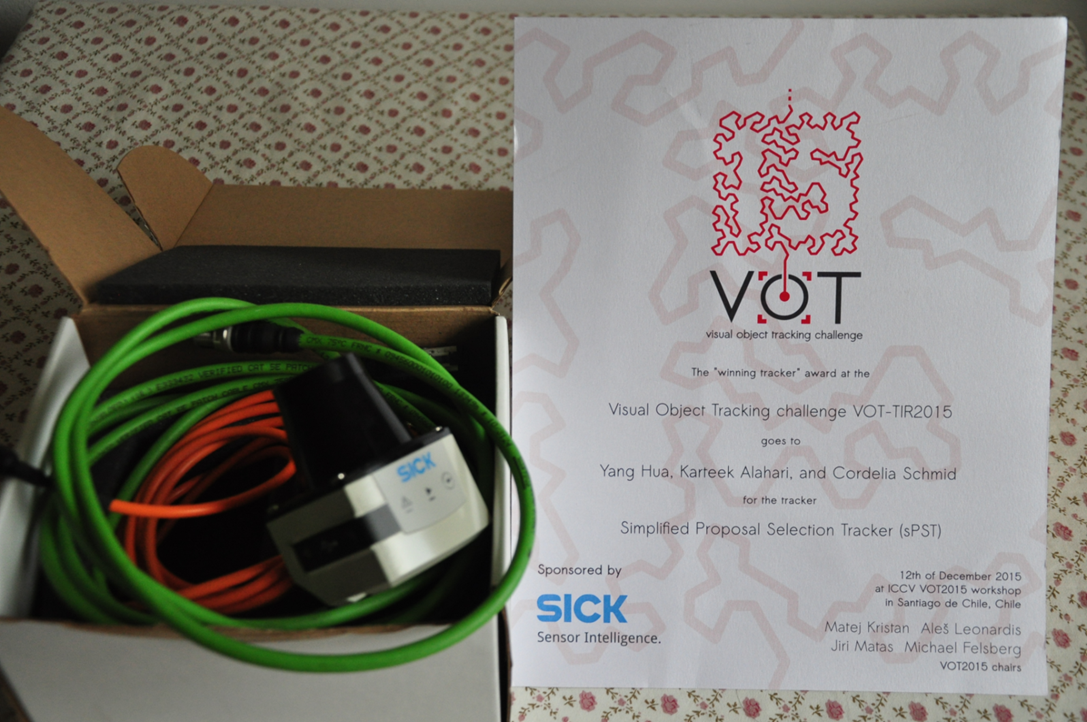Online Object Tracking with Proposal Selection
People
Abstract
Tracking-by-detection approaches are some of the most successful object trackers in recent years. Their success is largely determined by the detector model they learn initially and then update over time. However, under challenging conditions where an object can undergo transformations, e.g., severe rotation, these methods are found to be lacking. In this paper, we address this problem by formulating it as a proposal selection task and making two contributions. The first one is introducing novel proposals estimated from the geometric transformations undergone by the object and building a rich candidate set for predicting the object location. The second one is devising a novel selection strategy using multiple cues, i.e., detection score and edgeness score computed from state-of-the-art object edges and motion boundaries. We extensively evaluate our approach on the visual object tracking 2014 challenge and online tracking benchmark datasets, and show the best performance.
Paper
Yang Hua, Karteek Alahari, and Cordelia Schmid. Online Object Tracking with Proposal Selection. In ICCV 2015. [paper] [bibtex]
Award
We submitted a simplified version of the ICCV 2015 Proposal Selection Tracker to the VOT2015 and VOT-TIR2015 challenges, with identical configurations. This version (called sPST) does not include geometric proposals and motion boundaries selection, due to the computational cost of extracting optical flow. It also employs a more efficient strategy for extracting the HOG features. More details can be found in the submission report and the slides.
Our tracker was the winner in the VOT-TIR2015 challenge, and was ranked sixth among the 62 submissions in the VOT2015 challenge.

Source Code
- Proposal Selection Tracker (PST), ICCV2015
- simplified Proposal Selection Tracker (sPST), VOT challenge 2015
Raw Results
In each zip file below we provide the results of our tracker for each sequence in the corresponding dataset. For the OTB dataset, results of all the variants of our tracker are provided as mat files, containing the x_min, y_min, x_max and y_max coordinates of the tracking result in each frame. For the VOT2014 dataset, we provide results following the VOT 2014 challenge protocol. Note that these results correspond to those in our ICCV 2015 paper. For the VOT2015 and VOT-TIR2015 datasets, we provide results of the tracker submitted, i.e., sPST, following the challenge protocol. These results correspond to those reported in the VOT evaluation papers: VOT2015 and VOT-TIR2015.
- Proposal Selection Tracker (PST)
- simplified Proposal Selection Tracker (sPST)
Acknowledgements
This work was supported in part by the MSR-Inria joint project, Google Faculty Research Award, and the ERC advanced grant ALLEGRO.
Copyright Notice
The documents contained in these directories are included by the contributing authors as a means to ensure timely dissemination of scholarly and technical work on a non-commercial basis. Copyright and all rights therein are maintained by the authors or by other copyright holders, notwithstanding that they have offered their works here electronically. It is understood that all persons copying this information will adhere to the terms and constraints invoked by each author's copyright.